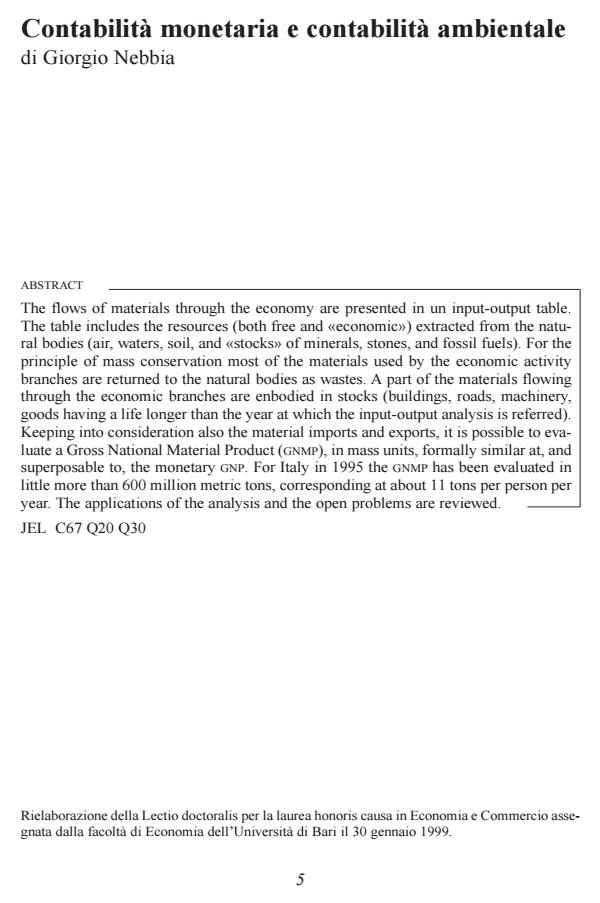Contabilità monetaria e contabilità ambientale
Titolo Rivista ECONOMIA PUBBLICA
Autori/Curatori Giorgio Nebbia
Anno di pubblicazione 1 Fascicolo 2000/6 Lingua Italiano
Numero pagine 29 P. Dimensione file 302 KB
DOI
Il DOI è il codice a barre della proprietà intellettuale: per saperne di più
clicca qui
Qui sotto puoi vedere in anteprima la prima pagina di questo articolo.
Se questo articolo ti interessa, lo puoi acquistare (e scaricare in formato pdf) seguendo le facili indicazioni per acquistare il download credit. Acquista Download Credits per scaricare questo Articolo in formato PDF

FrancoAngeli è membro della Publishers International Linking Association, Inc (PILA)associazione indipendente e non profit per facilitare (attraverso i servizi tecnologici implementati da CrossRef.org) l’accesso degli studiosi ai contenuti digitali nelle pubblicazioni professionali e scientifiche
The flows of materials through the economy are presented in un input-output table. The table includes the resources (both free and "economic") extracted from the natural bodies (air, waters, soil, and "stocks" of minerals, stones, and fossil fuels). For the principle of mass conservation most of the materials used by the economic activity branches are returned to the natural bodies as wastes. A part of the materials flowing through the economic branches are enbodied in stocks (buildings, roads, machinery, goods having a life longer than the year at which the input-output analysis is referred). Keeping into consideration also the material imports and exports, it is possible to evaluate a Gross National Material Product (GNMP), in mass units, formally similar at, and superposable to, the monetary GNP. For Italy in 1995 the GNMP has been evaluated in little more than 600 million metric tons, corresponding at about 11 tons per person per year. The applications of the analysis and the open problems are reviewed.;
Giorgio Nebbia, Contabilità monetaria e contabilità ambientale in "ECONOMIA PUBBLICA " 6/2000, pp , DOI: